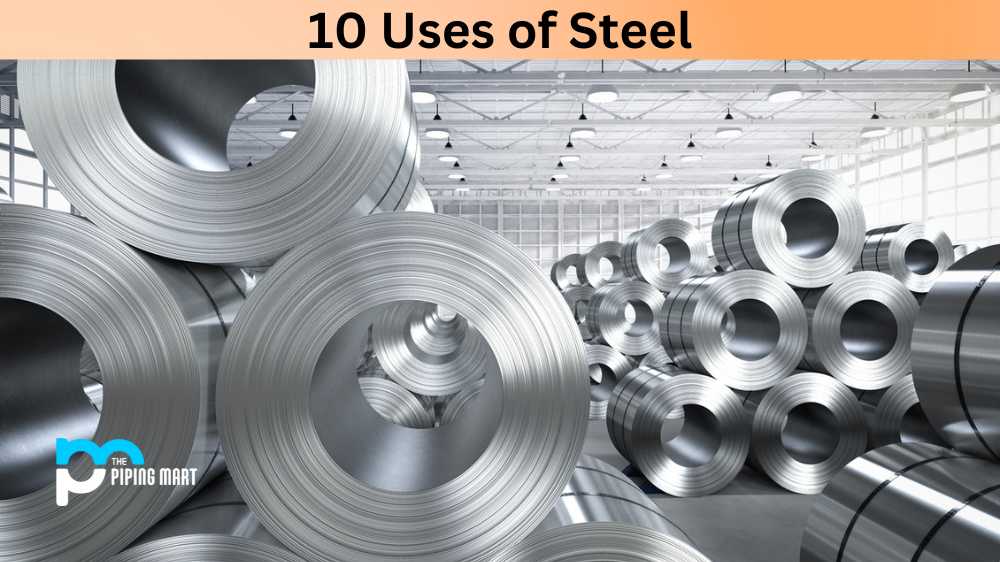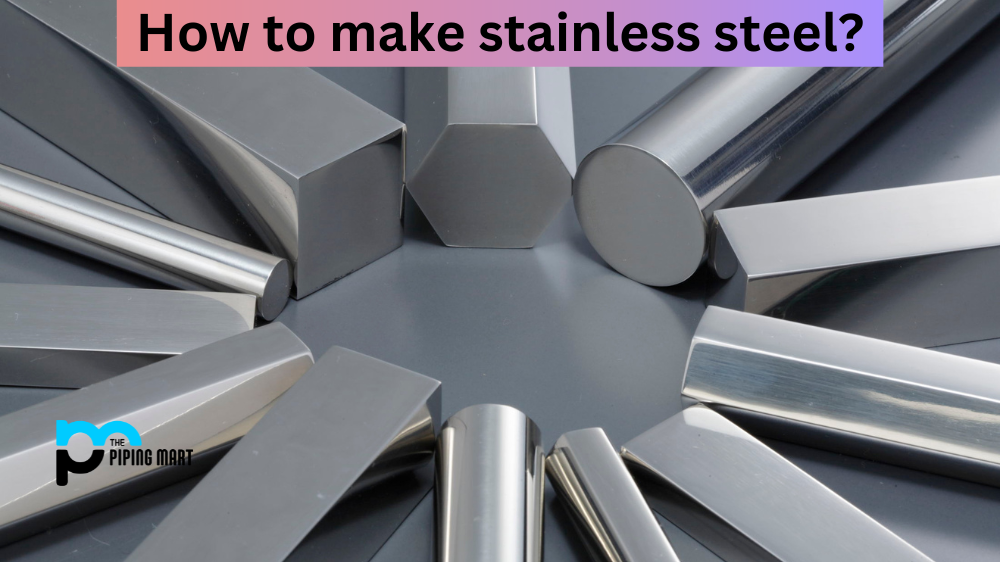Have you ever wondered why Steel is considered one of the most important materials in the world? Have you heard about its popularity in the construction industry? Did you know that Steel has much more to offer than only being a building material? In this blog post, we’ll explore the top ten uses of Steel, from its composition and physical and mechanical properties to its various applications, hardness, heat treatment, welding, and corrosion-resistant features. So, let’s dive in and discover why Steel is the ultimate material for many industries.
Steel Composition
Contrary to popular belief, Steel isn’t a naturally occurring element but an iron alloy. It comprises various elements, including carbon, silicon, manganese, sulfur, and phosphorus. Depending on the Steel’s composition, its properties can range from low to high corrosion resistance, flexibility, toughness, and more. The composition of Steel can also affect how it reacts to heat treatment and other forms of processing.
| Component Elements Properties | Metric | English |
|---|---|---|
| Carbon, C | 0.030 – 1.25 % | 0.030 – 1.25 % |
| Iron, Fe | 80 – 98 % | 80 – 98 % |
| Manganese, Mn | 0.20 – 16 % | 0.20 – 16 % |
| Phosphorus, P | <= 0.050 % | <= 0.050 % |
| Silicon, Si | 0.00 – 0.50 % | 0.00 – 0.50 % |
| Sulfur, S | <= 0.050 % | <= 0.050 % |
Steel Physical Properties
Steel is a versatile material with numerous physical properties that make it ideal for various applications. It’s strong, durable, and has an excellent weight-to-strength ratio. Steel can also maintain its shape under external forces and remain unaffected by extreme temperatures, making it a preferred choice in the construction, automotive, and aerospace industries. Steel’s electrical conductivity and magnetic qualities also make it a popular component in electronics.
Steel Mechanical Properties
In addition to its physical properties, Steel boasts several mechanical properties that enhance its functionality. Steel’s elasticity, ductility, and malleability make it easy to shape into different forms and sizes. And when combined with heat treatment, Steel can further improve its hardness, strength, and toughness, which are essential in quality knives, springs, and tools.
| Mechanical Properties | Metric | English |
|---|---|---|
| Hardness, Brinell | 121 | 121 |
| Hardness, Knoop | 140 | 140 |
| Hardness, Vickers | 126 | 126 |
| Tensile Strength, Ultimate | 420 MPa | 60900 psi |
| Tensile Strength, Yield | 350 MPa | 50800 psi |
| Elongation at Break | 15 % | 15 % |
| Modulus of Elasticity | 200 GPa | 29000 ksi |
| Bulk Modulus | 140 GPa | 20300 ksi |
| Poissons Ratio | 0.25 | 0.25 |
| Machinability | 65 % | 65 % |
| Shear Modulus | 80.0 GPa | 11600 ksi |
Steel Uses
Steel’s versatility ensures it’s used in an extensive range of industries. In construction, it’s used for bridges, skyscrapers, and pipelines. Steel is also a key component in automotive and aerospace, used in car bodies, engines, and aeroplanes. Additionally, it’s used to manufacture household appliances, power tools, and machinery, thanks to its strength and durability.
Steel Hardness
Steel’s hardness is determined by the alloy’s presence and amount of carbon. High-carbon steel, for example, has excellent hardness and is used to manufacture cutting tools and knives. Conversely, low-carbon Steel is flexible and used for car frames and building structures.
Steel Heat Treatment
Heat treatment is a process that involves heating and cooling steel to improve its physical and mechanical qualities. Steel can enhance its hardness, strength, and toughness through heat treatment, making it great for high-stress applications. Different heat treatment techniques result in various steel types, such as carbon steel, alloy steel, and tool steel.
Steel Welding
Steel’s welding properties make it an easy-to-use material. It’s often welded to join two or more pieces of Steel, giving it an additional layer of strength. The welding process requires specific techniques and precautions, but when done correctly, it can effectively bond steel parts, ensuring their durability and longevity.
Steel Corrosion-Resistant
Corrosion is Steel’s biggest enemy, so there’s a need for corrosion-resistant Steel. Steel manufacturers can add elements such as chromium, nickel, and copper to improve the Steel’s corrosion resistance. This type of Steel is ideal for docks, boats, oil rigs, and chemical processing plants often exposed to harsh environmental conditions.
Conclusion
Steel’s versatility, durability, and strength make it an irreplaceable component in various industries worldwide. From construction to automotive and aerospace, household appliances to power tools, Steel’s properties and applications are vast. Whether you’re looking for corrosion-resistant or stiff and rigid Steel, there’s a steel type for every requirement. So, the next time you see a skyscraper or fly in an aeroplane, remember that Steel played a crucial role in making it possible.

Abhishek is a seasoned blogger and industry expert, sharing his insights and knowledge on various topics. With his research, Abhishek offers valuable insights and tips for professionals and enthusiasts. Follow him for expert advice on the latest trends and developments in the metal industry.




